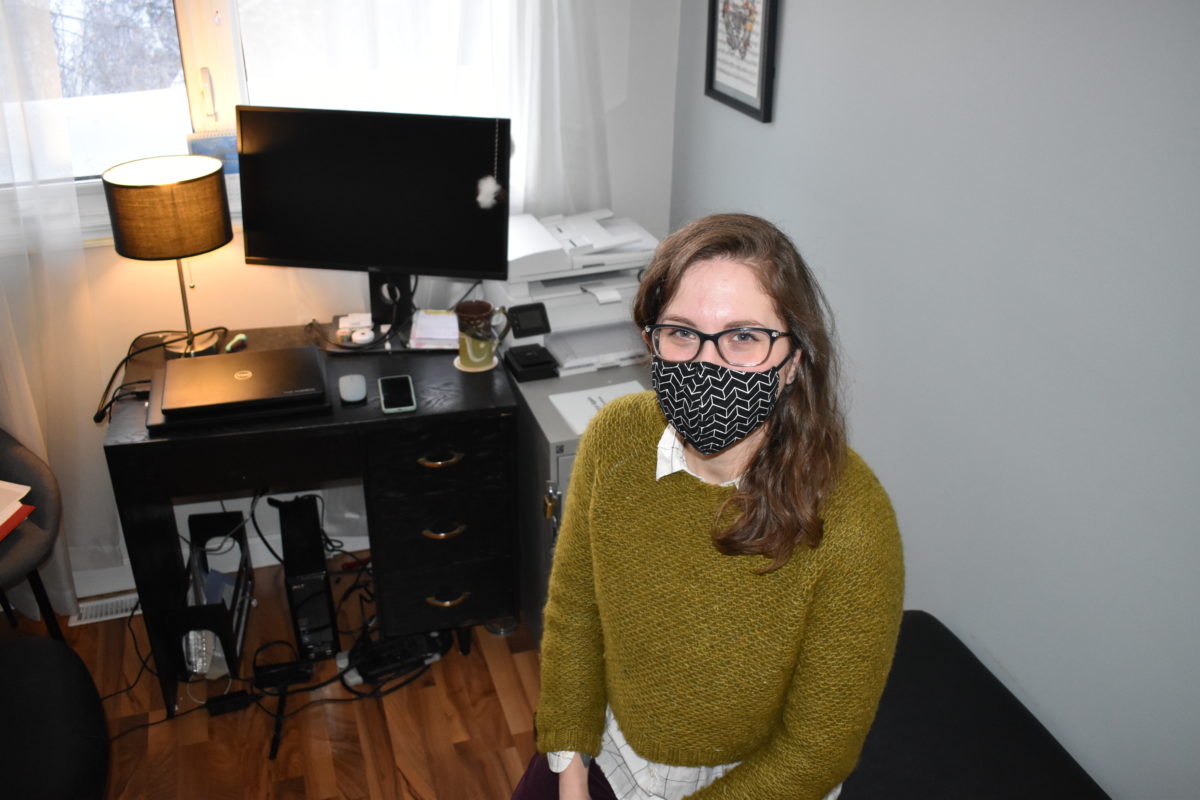Working fewer hours but seeing more patients remotely, says physiotherapist Kaeleigh Brown
The Covid-19 pandemic gave Wildrose Physiotherapy an opportunity to lock in a virtual approach to health care.
When coronavirus first arrived in the NWT last March, Wildrose owner Kaeleigh Brown halted in-person appointments.
Search for virtual platform
She remained closed for about six weeks while she searched for a tele-rehabilitation company that could provide appropriate privacy controls for remote health care.
“There was a dip in appointments but it wasn’t as significant as I thought it was going to be,” Brown said.
Due to the fact that many other businesses were searching for virtual platforms in the early months of the pandemic, it was fairly straightforward to find one.
Smooth transition to virtual care

Once she resumed services, she conducted all of her appointments over Zoom and then in September started a hybrid model of in-person appointments and telehealth rehab sessions.
“Some people were quite happy to try it out. Others were more hesitant and took some time to come to a decision,” she said. “Others were happy to wait until I could see them in-person again.”
Much of her care could continue as usual in the virtual format, since a lot of her treatment is in education and exercise prescriptions.
But other forms of care such as pelvic muscle physiotherapy must be done in person.
“Pelvic floor requires an internal exam. That’s impossible virtually,” she said.
Like anyone else in the health field who needs to be in close contact with clients, Brown’s in-person appointments require extra cleaning of her office to comply with Covid-19 regulations.
“Being on top of prevention and control measures and staying on top of best practices and complying with Workers’ Safety and Compensation Commission guidelines (can be hard). It adds an extra step but it’s not as bad as I thought it was going to be.”
Fewer hours, more clients
Although the time she spends with clients has declined from about a day and a half per week before the pandemic to around a half day now, she has been able to see more people through remote appointments.
Virtual sessions are shorter and she requires less time between appointments to prepare for the next ones.
“They give me more flexibility. When my partner is at home it requires juggling of our schedules to see patients in person. It’s easier in the sense that I have more flexibility to see patients virtually,” Brown said.
The slower hours have also had a limited impact on her finances because she works a separate full-time job.
Better work-life balance
Another benefit of the virtual shift is the added convenience for clients who live outside of Yellowknife.
“(They) have had better access to my services by using tele-rehab and virtual appointments. Before, it was challenging to schedule appointments that lined up with dates when they were in Yellowknife.”
Even after the Covid vaccination program is successfully completed, Brown plans to continue with her hybrid model of care indefinitely.
She also welcomes the relative slow down of her business, saying it has given her better work-life balance.
“That’s been a good lesson from the pandemic.”
